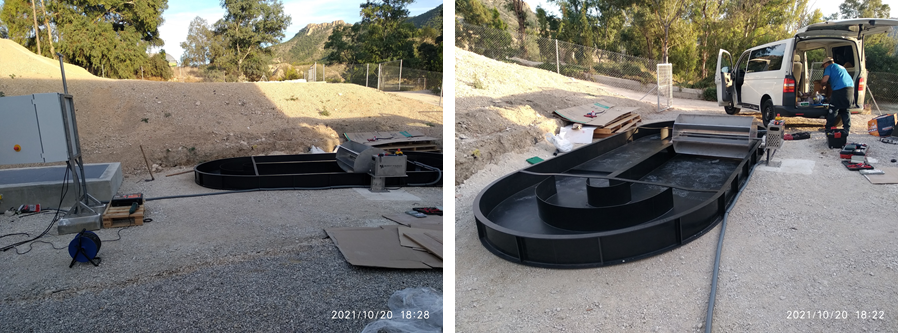AQUACYCLE shares first set of chemical analysis results of treated effluent quality

With this news post, we share the first results of the chemical analysis of the water quality of the treated effluent obtained at, respectively (1) the outlet of the anaerobic reactor and (2) the outlet of the two recently constructed wetlands at the Blanca Wastewater Treatment Plant (WWTP) in the Murcia Region of Spain.
The video clip below documents the completion of the construction of both wetlands, which have been designed to receive the treated effluent of the existing anaerobic digester at the Blanca WWTP. The third and final component of AQUACYCLE's eco-innovative wastewater treatment technology, a raceway pond reactor for solar disinfection, has also been commissioned. The pilot demonstration units will be operated and monitored by the Spanish entities ESAMUR and PSA-CIEMAT in the AQUACYCLE Partnership.
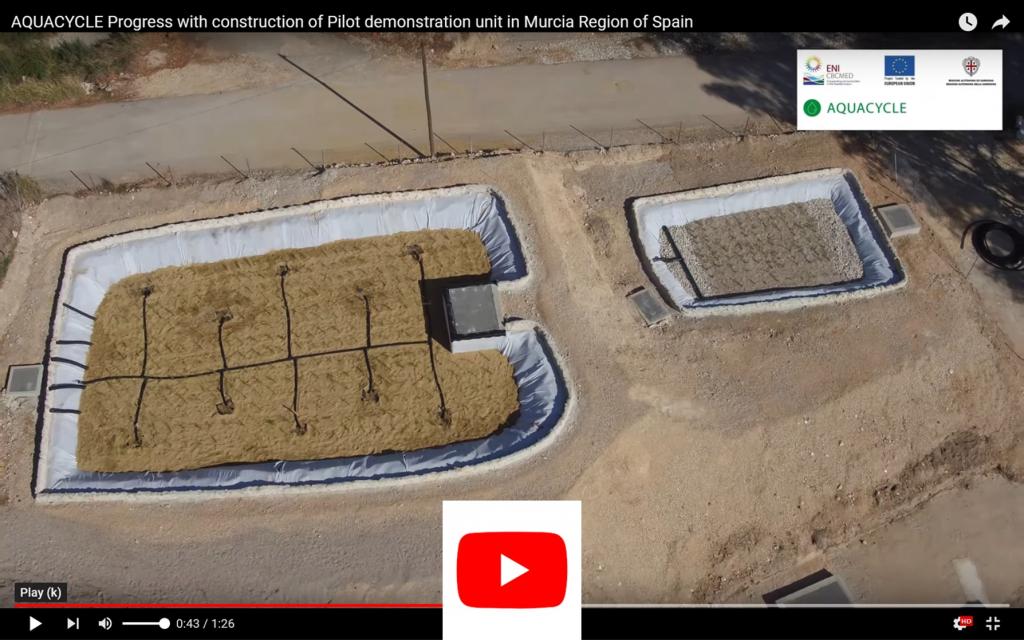
The figure below shows the outlet of the Constructed Wetlands from which the water samples were taken to determine the quality of the water at the outlet of this second component in AQUACYCLE’s eco-innovative wastewater treatment technology.
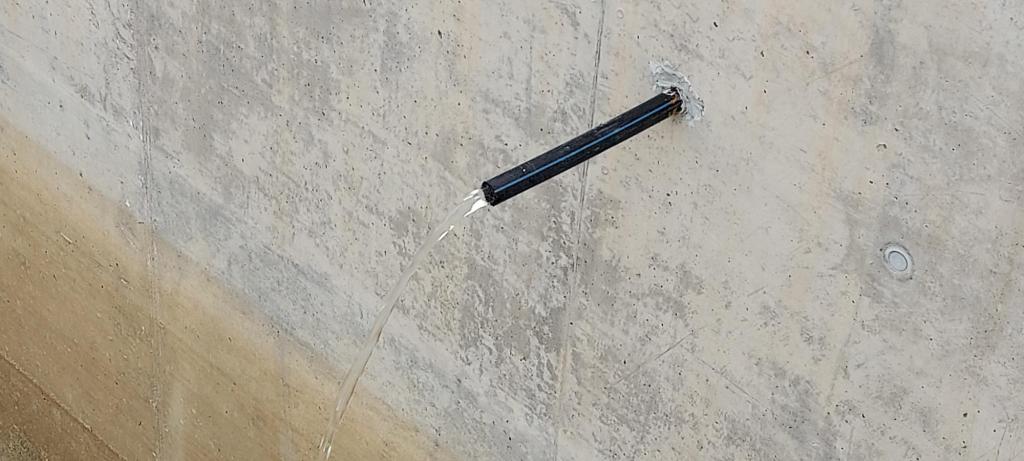
We invited Pedro Simón Andreu, who is Teamleader in AQUACYCLE and Technical Director of the Regional Entity for Wastewater Sanitation and Treatment in Murcia (ESAMUR), to give his appraisal of these analytical results.
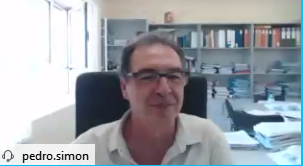 “Our first analytical results show a very low concentration of Chemical Oxygen Demand (COD) and of Suspended Solids (SS) at the outlet of the Constructed Wetlands. Although the nitrogen compounds removal does not appear to be very good, I suppose we need more time for the growth of the plants and nitrifying bacteria in these newly constructed wetlands. On the other hand, I think that in the next analysis we shall see a higher concentration than the one obtained for this first test, since at least to me, the removal efficiency shown in the table below seems to be ‘too’ good."
“Our first analytical results show a very low concentration of Chemical Oxygen Demand (COD) and of Suspended Solids (SS) at the outlet of the Constructed Wetlands. Although the nitrogen compounds removal does not appear to be very good, I suppose we need more time for the growth of the plants and nitrifying bacteria in these newly constructed wetlands. On the other hand, I think that in the next analysis we shall see a higher concentration than the one obtained for this first test, since at least to me, the removal efficiency shown in the table below seems to be ‘too’ good."
Still, I really do believe that our first test results are highly promising and are definitely exceeding my own expectations.

We also share a further appraisal by Dr. Konstantinos Plakas, of the Centre for Research and Technology, Hellas (CERTH) and AQUACYCLE Project Manager.
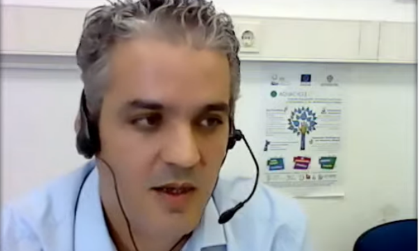 “Indeed, the removal of Suspended Solids and of organic compounds is impressive. Concerning the removal of nitrogen compounds, I concur that the uptake by the plants is going to become enhanced with time. This is for the reason that the removal efficiency of these compounds is linked with the rhizome, i.e. the main stem of the plants that runs underground horizontally, and the development of nitrifying bacteria. On the other hand, I am surprised with the high concentration of ammonium (NH4) ions."
“Indeed, the removal of Suspended Solids and of organic compounds is impressive. Concerning the removal of nitrogen compounds, I concur that the uptake by the plants is going to become enhanced with time. This is for the reason that the removal efficiency of these compounds is linked with the rhizome, i.e. the main stem of the plants that runs underground horizontally, and the development of nitrifying bacteria. On the other hand, I am surprised with the high concentration of ammonium (NH4) ions."
"I do hope that with the next results the concentration of ammonium will decrease below the latest regulatory standards for reuse (<15 mg/l, and <2 mg/l for protected areas)."
Meanwhile, Dr. Isabel Oller Alberola, Teamleader of the Plataforma Solar de Almeria (PSA) - Energy Department - Solar Treatment of Water Unit (PSA-CIEMAT) shared the first pictures of the commissioning of the pilot demonstration raceway pond reactor.

“I would like to share some initial pictures I made of the raceway pond reactor that has been commissioned from a research group at the University of Almería. We envisage the installation will be completed by mid-November 2021.”
